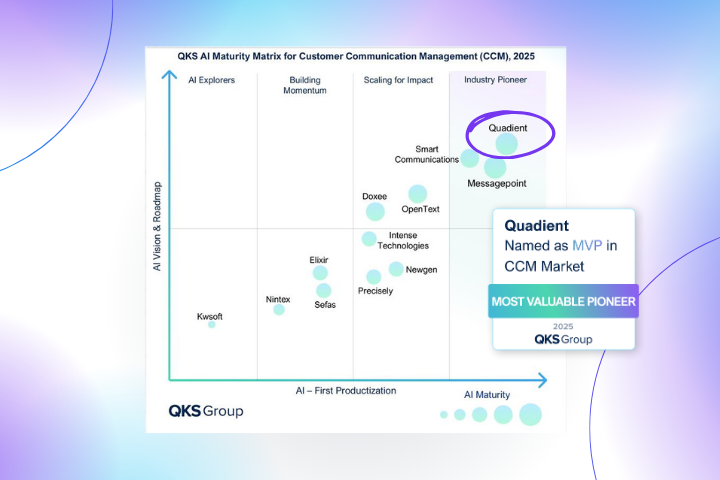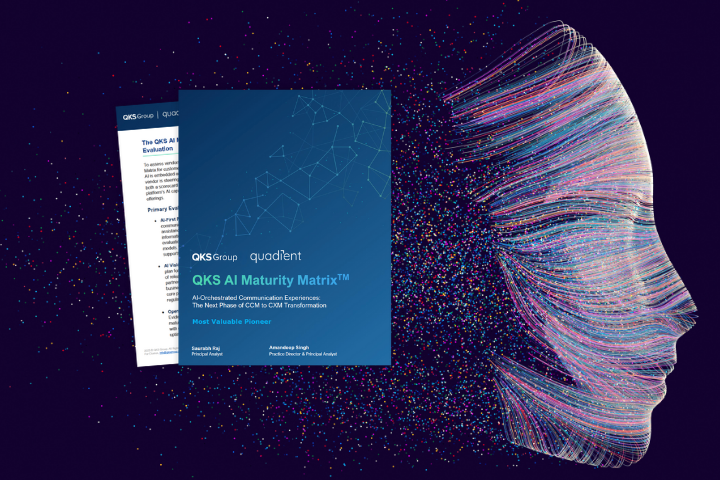
Businesses typically migrate to a new Customer Communications Management (CCM) system every 15-20 years. In the years between migrations, many things can change. Internal knowledge can get lost, content templates could be mistakenly duplicated, and unofficial workarounds can be adopted as technology becomes legacy.
This leaves your internal IT team — who have likely never managed a once-in-a-career, large-scale CCM migration project — with many uncertainties as they try to understand, navigate, and mitigate these challenges all while managing an already complex CCM migration project.
Even the most talented, experienced, and dedicated teams can struggle.
It sounds like the only option to conduct a CCM system migration is to cross your fingers as your in-house teams desperately scramble for a seamless migration that doesn’t impact your business operations, introduce compliance risk, or threaten your customer experience.
However, an alternative to this wish-and-hope approach is to leverage the wisdom, expertise, and experience of a managed service provider.
What is a Managed Service Provider (MSP)?
A Managed Service Provider (MSP) is a third party that manages a particular service for an organization. MSPs can be a great way for enterprise companies to leverage higher quality services where they lack resources, expertise, or experience to deliver these services.
For example, who would you place your bets on to better manage IT security for an organization?
a) An insurance company
b) An IT security company
If IT security is a major priority for the insurance company, they’d likely receive a better service from experts in that field.
How could MSPs help organizations navigate CCM Migration Challenges?
We've identified the top 3 risks your internal IT team will face when migrating off a legacy CCM system and ways MSPs can help.
Risk #1: Unlocking Hidden Value - Overcoming Limitations in Migration
You can’t expect maximum ROI if you’re not making the most of what you’re paying for. Not maximizing capabilities means that you’ll never get the ROI that’s in your calculations, meaning you’re left paying for features, integrations, and capabilities that go unused or not optimized.
Consider how many examples your company has of solutions that deliver the ROI they promised, year-over-year? Do you have any examples where that ROI has exceeded?
One way to mitigate the risk of lost ROI is to have a long-term management and optimization plan for the software that you have invested in. But staff turnover and competing priorities means that this has been forgotten about.
The reality is that many solutions aren’t maximized to their potential because the internal teams managing them don’t have the knowledge, skills, time, or resources that they need to do so. These teams aren’t experts in the software, and they likely have other pressing demands and responsibilities which means they can’t prioritize maximizing ROI on their CCM solution. MSPs offer a team of experts that are dedicated to implementing and managing their software in a way that maximizes ROI.
Risk #2: Proactive Risk Management — Ensuring a Smooth Migration Journey
CCM migration done wrong can put a company’s outgoing communications at risk. For a CCM migration to take place, existing templates need to be categorized, content blocks need to be rationalized, and integrations and APIs must be configured correctly.
If this work is poorly planned, the knock-on effects can include:
• Excessive downtime
• Missed SLAs — and associated fines
• An increase in customer support tickets
• Poor customer experience
• Longer time-to-market
• Lost business
• Weakened brand identity
• Low employee morale
By leveraging an MSP, organizations will have a dedicated team of professionals offering intensive hands-on support to predict, manage, and minimize these risks. Utilizing the experience of teams who have conducted countless CCM migrations provides trust that no stone will be left unturned, and unexpected surprises won't pop up.
Risk #3: Easing the IT Burden - Streamlining the Migration Process
You hired your internal IT teams because they’re good at what they do, but they don’t know the software as well as the people who created it. And because they’re good, you want to take advantage of their skills on high-impact projects that add value.
In the best-case scenario, your IT team is a smooth-sailing machine that’s fully resourced and has the budget it needs. Even in this best-case scenario, the complexities of CCM technology mean that a lot of that time, energy, and resources need to be redirected to supporting the migration while it’s taking place. This draws precious resources away from the Keeping The Lights On (KTLO) work that they normally do, which can include security, compliance, automation, network, hardware, and software. An MSP can not only help to reduce the KTLO work for your IT team, but also leave space for them to innovate.
MSPs can help your organization to avoid these challenges that come with migration. But they can also bring about net-new benefits, such as boosting innovation for your company.
Read the next blog post in this series, ‘How can CIOs Drive Innovation with MSPs?’.







